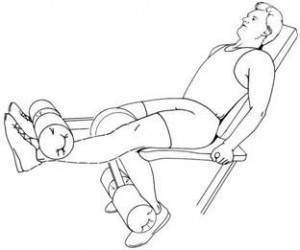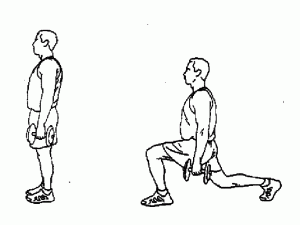Guest Post By Mike Grafstein B.Ph.Ed, CAT(C), YCS, RMT
Courtesy www.EliteSoccerPower.com
Why would you place a young soccer player on an exercise machine when they have their own body to use?
Machine exercise programs are a lazy way for outdated, uninformed dinosaur coaches to build strength so they don’t have to worry about supervising young soccer players. I make no apologies about anything I say or write about youth strength training for soccer because this is how I feel and what I’ve had to deal with from a therapy perspective. So you will either like the message or not. It’s your choice and if anything maybe you will learn something new..?

Is it any wonder that strength training for young soccer players has a bad a name. Perhaps we need to put this in perspective. Really, if you think about the goal of any type of strength training program is to overcome or control resistance. This may be in a form of weights, sand bags, medicine balls or tires. The key is performing the correct exercise that is appropriate for the age group.
Next let’s compare two exercises and decide which one has a better value for athletic performance on soccer field. Let’s look at the leg extension (sitting with leg bent at knee) and the lunge. Many high schools and gyms have some form of the universal leg extension machine. I know because I’ve seen it and used it in the past in both high school and at the gym. It is easy for some one to sit on a seat and hold handles at the side to straighten the leg (extension). Before I move on to the lunge, ask your self at what point in a soccer game does a player sit on the ground and straighten his or her legs?
Let’s talk about the lunge or more specific the reverse lunge. Let’s take a close at the action of the reverse lunge. We start with our legs shoulder width apart then take a step back. From that position we drive the back leg forward with as much force as possible. As we do this the leg is moving into a straight position at the knee joint. Ask yourself does this action or a form of it occur during a soccer game. I think the answer is straight forward. So let’s look at positives of both exercises. The leg extension allows you to be seated so that your “core” is relaxed. The reverse lunge forces you to maintain balance, brace the core and drive the leg forward for soccer strength, soccer power and soccer speed. It closely resembles the action of running or sprinting and of course these actions occur during a soccer game.

The other thing with the reverse lunge is that there is a focus on single leg strength. This type of strength is overlooked in any machine type exercise program. Most machine type exercises have either seated or lying on your back using both legs. This not appropriate or “ functional”.
So there you have it. Part one of a three part series. Watch for Part Two next week!
To further serve your needs for proper exercise selection I suggest you head over to http://www.elitesoccerpower.com.
By Mike Grafstein B.Ph.Ed, CAT(C), YCS, RMT
Courtesy Elite Soccer Power
Author Elite Soccer Power Unleashed http://www.elitesoccerpower.com © 2010
Athletic Performance, Health and Wellness
Short, sweet, to the point, FREE-excalty as information should be!
it depends on the pstoiion of the defender, with a defender behind you or beside you, usually you need to stretch it long, dribbling it farther away from you than you usually do, then run after it. i usually hit it with my upper outer part of my toes. look for ronaldhino videos during his prime at barcelonaif the opponent is in front of you, play it short, diagonally behind your marker making him/her backpedal and turn, if your faster than the defender you can still control the ball, watch how wingers play, it’s what they do to get to the sides before crossing the ball